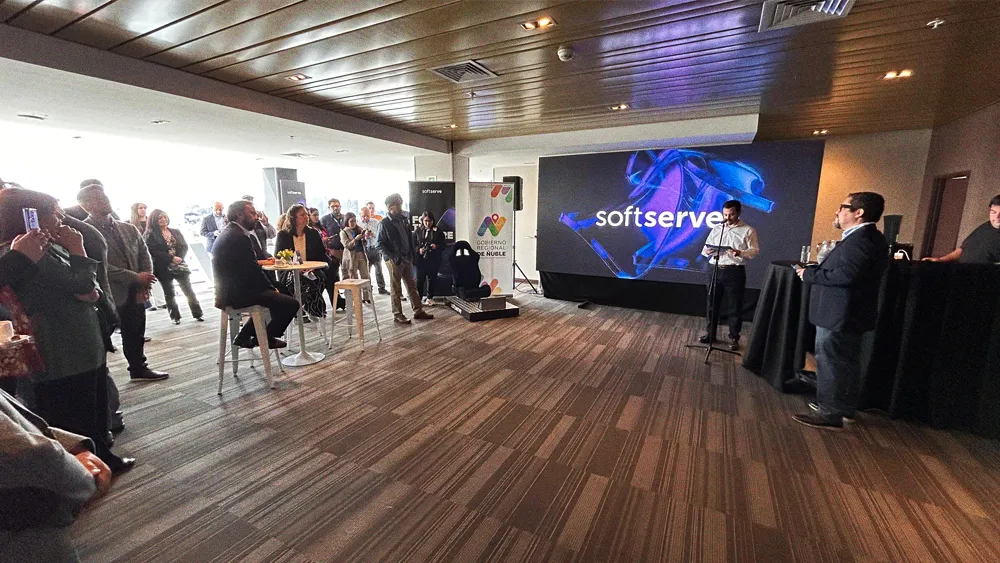Tracking vs. Trust: Are leaders choosing the wrong tools in the battle for productivity?

Key Points
The rise of digital surveillance and return-to-office mandates is creating a culture of compliance over contribution in the modern workplace.
John Helmer, a Principal Account Manager at Honeywell, argues that leaders use tracking as a “get-out-of-jail-free card” to avoid their own accountability.
The focus on presence over performance encourages employees to fabricate results, rendering the data useless and defeating the purpose of tracking.
Helmer advocates for a shift to a partnership model where leaders coach their teams through conversation rather than simply watching them.
When we start using these tracking metrics, we're taking away that accountability from ourselves. Sometimes tracking to that nth degree is like a get-out-of-jail-free card, where we're not being accountable as leaders.

John Helmer
Principal Account Manager
Honeywell
Return-to-office mandates and digital surveillance are colliding with a workforce that values trust over control. Leaders leaning on badge data, monitoring tools, and mandated office time risk trading productivity for compliance. While some leaders see tracking as a necessary tool, others argue it’s a dangerous crutch—a substitute for true leadership. The question isn’t whether the tools are good or bad, but whether they’re being used to build stronger teams or simply to watch them.
We spoke with John Helmer, a Principal Account Manager at Honeywell who has spent over two decades in customer-facing and leadership roles. From managing sales teams at Intelligrated to architecting high-value service programs, Helmer has built a career on what his professional philosophy calls “high-touch service” and a “relentless focus on value”—principles that stand in stark contrast to the impersonal nature of surveillance. Drawing on 25 years of boots-on-the-ground experience, he argued that the obsession with presence metrics is a critical mistake that corrodes the very foundation of a high-performing team.
Give people a vision: Helmer’s philosophy is built on a direct challenge to the micromanagement trend. “For a leader, your job is to give people a vision. When you just micromanage where people are and what they’re doing, you’re missing the point of what is productive,” he warned. “By tracking, you’re almost creating your workforce like robots.” For Helmer, the problem isn’t the technology itself, but the leadership vacuum it’s being used to fill.
This reliance on metrics, he argued, is often a way for leaders to dodge their most important responsibility. “When we start using these tracking metrics, we’re taking away that accountability from ourselves,” Helmer explained. “Sometimes tracking to that nth degree is like a get-out-of-jail-free card, where we’re not being accountable as leaders.”
The flawed focus on activity over impact creates a corporate theater where appearing busy is more important than achieving results. Helmer notes that the assumption that physical presence equals productivity is easily debunked by a universally recognized workplace ritual.
By the water cooler: “I do believe the office has a place, but it also has to be productive,” he said. “Sometimes there’s a lot of lack of productivity in an office as well because people hang around the water cooler. Personal interactions are great and relationship building is great, but it should be done in context.” When leaders prioritize tracking these often-superficial activities, they inadvertently encourage their teams to optimize for the wrong things.
It creates a dangerous downward spiral. The more leaders track, the more employees feel compelled to perform for the metrics, even if it means bending the truth. Helmer has seen it firsthand. “When there’s too much tracking, you see people almost fabricating and just ticking a checkbox,” he said. “You could be getting checkboxes that make the picture look very rosy, but it’s not. It’s fabricated.” The system designed to ensure accountability ultimately produces unreliable data, defeating its own purpose.
The alternative, Helmer insisted, is to flip the model entirely. Instead of forcing employees to earn trust through constant proof, leaders should grant it as the baseline and empower their teams to live up to the expectation. The framework for this is simple yet powerful: “trust but verify.” But in Helmer’s model, verification isn’t about checking keystrokes; it’s about genuine engagement.
Talk it out: “It’s a conversational approach. You ask somebody, ‘How did that client meeting go? How did they respond? What did you go over? What were the key things you found out? Are we moving closer to working with that customer? Or are there things that maybe I can escalate to help you win the deal?'” he clarified. “It’s about us helping each other. We’re partners.”
This partnership transforms the leader’s role from a watchdog to a teacher. By creating an environment of psychological safety, leaders open the door for the kind of honesty that fuels real growth. “When there’s trust first, employees can be completely honest and say ‘The meeting was terrible, and here’s why. I didn’t get the reaction I needed. I might have missed this point in preparing.’ Then it becomes a teaching point,” Helmer explained. “There’s a chance for analysis and correction, but it’s not me coming down on them and saying, ‘You didn’t hit that.'”
Ultimately, Helmer’s message is a call for leaders to lead by example, not by spreadsheet. It’s about embracing personal accountability and taking full ownership of the team’s outcomes, good or bad. “As a leader, your job is to protect your team, but it’s also to motivate your team,” Helmer concluded. “And at the end of the day, if something goes wrong, it’s not your fault—it’s my fault as the leader.”
As a leader, your job is to protect your team, but it's also to motivate your team. And at the end of the day, if something goes wrong, it's not your fault—it's my fault as the leader.

John Helmer
Principal Account Manager
Honeywell
As a leader, your job is to protect your team, but it's also to motivate your team. And at the end of the day, if something goes wrong, it's not your fault—it's my fault as the leader.

John Helmer
Principal Account Manager
Honeywell
Related articles
TL;DR
The rise of digital surveillance and return-to-office mandates is creating a culture of compliance over contribution in the modern workplace.
John Helmer, a Principal Account Manager at Honeywell, argues that leaders use tracking as a “get-out-of-jail-free card” to avoid their own accountability.
The focus on presence over performance encourages employees to fabricate results, rendering the data useless and defeating the purpose of tracking.
Helmer advocates for a shift to a partnership model where leaders coach their teams through conversation rather than simply watching them.

John Helmer
Honeywell
Principal Account Manager

Principal Account Manager
Return-to-office mandates and digital surveillance are colliding with a workforce that values trust over control. Leaders leaning on badge data, monitoring tools, and mandated office time risk trading productivity for compliance. While some leaders see tracking as a necessary tool, others argue it’s a dangerous crutch—a substitute for true leadership. The question isn’t whether the tools are good or bad, but whether they’re being used to build stronger teams or simply to watch them.
We spoke with John Helmer, a Principal Account Manager at Honeywell who has spent over two decades in customer-facing and leadership roles. From managing sales teams at Intelligrated to architecting high-value service programs, Helmer has built a career on what his professional philosophy calls “high-touch service” and a “relentless focus on value”—principles that stand in stark contrast to the impersonal nature of surveillance. Drawing on 25 years of boots-on-the-ground experience, he argued that the obsession with presence metrics is a critical mistake that corrodes the very foundation of a high-performing team.
Give people a vision: Helmer’s philosophy is built on a direct challenge to the micromanagement trend. “For a leader, your job is to give people a vision. When you just micromanage where people are and what they’re doing, you’re missing the point of what is productive,” he warned. “By tracking, you’re almost creating your workforce like robots.” For Helmer, the problem isn’t the technology itself, but the leadership vacuum it’s being used to fill.
This reliance on metrics, he argued, is often a way for leaders to dodge their most important responsibility. “When we start using these tracking metrics, we’re taking away that accountability from ourselves,” Helmer explained. “Sometimes tracking to that nth degree is like a get-out-of-jail-free card, where we’re not being accountable as leaders.”
The flawed focus on activity over impact creates a corporate theater where appearing busy is more important than achieving results. Helmer notes that the assumption that physical presence equals productivity is easily debunked by a universally recognized workplace ritual.
By the water cooler: “I do believe the office has a place, but it also has to be productive,” he said. “Sometimes there’s a lot of lack of productivity in an office as well because people hang around the water cooler. Personal interactions are great and relationship building is great, but it should be done in context.” When leaders prioritize tracking these often-superficial activities, they inadvertently encourage their teams to optimize for the wrong things.

John Helmer
Honeywell
Principal Account Manager

Principal Account Manager
It creates a dangerous downward spiral. The more leaders track, the more employees feel compelled to perform for the metrics, even if it means bending the truth. Helmer has seen it firsthand. “When there’s too much tracking, you see people almost fabricating and just ticking a checkbox,” he said. “You could be getting checkboxes that make the picture look very rosy, but it’s not. It’s fabricated.” The system designed to ensure accountability ultimately produces unreliable data, defeating its own purpose.
The alternative, Helmer insisted, is to flip the model entirely. Instead of forcing employees to earn trust through constant proof, leaders should grant it as the baseline and empower their teams to live up to the expectation. The framework for this is simple yet powerful: “trust but verify.” But in Helmer’s model, verification isn’t about checking keystrokes; it’s about genuine engagement.
Talk it out: “It’s a conversational approach. You ask somebody, ‘How did that client meeting go? How did they respond? What did you go over? What were the key things you found out? Are we moving closer to working with that customer? Or are there things that maybe I can escalate to help you win the deal?'” he clarified. “It’s about us helping each other. We’re partners.”
This partnership transforms the leader’s role from a watchdog to a teacher. By creating an environment of psychological safety, leaders open the door for the kind of honesty that fuels real growth. “When there’s trust first, employees can be completely honest and say ‘The meeting was terrible, and here’s why. I didn’t get the reaction I needed. I might have missed this point in preparing.’ Then it becomes a teaching point,” Helmer explained. “There’s a chance for analysis and correction, but it’s not me coming down on them and saying, ‘You didn’t hit that.'”
Ultimately, Helmer’s message is a call for leaders to lead by example, not by spreadsheet. It’s about embracing personal accountability and taking full ownership of the team’s outcomes, good or bad. “As a leader, your job is to protect your team, but it’s also to motivate your team,” Helmer concluded. “And at the end of the day, if something goes wrong, it’s not your fault—it’s my fault as the leader.”




